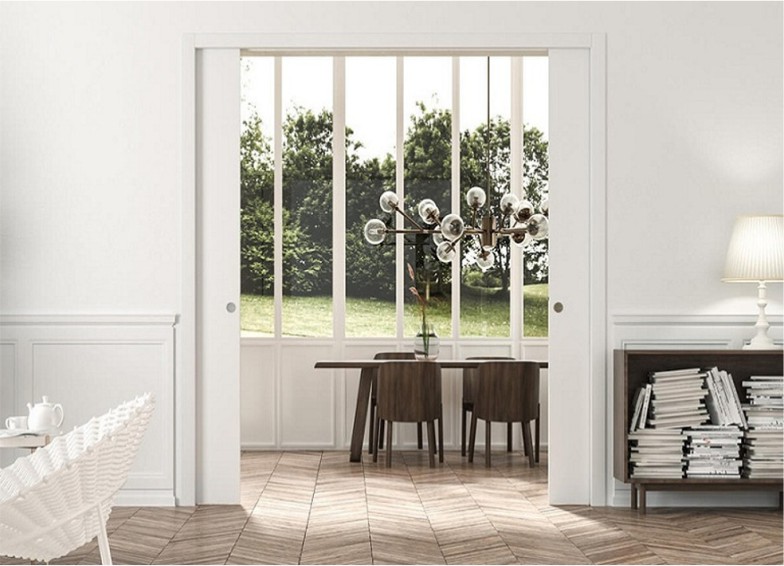How Do You Choose The Right Size Pocket Door?

The pocket door could be an innovative solution for your home or workplace, with many practical solutions. These are usually based around the ability to section off and open up areas temporarily – for entertaining at home or for shows or exhibitions at work – and for creating space in a room to enable a new purpose or multiple purposes.
Installation of a pocket door is relatively simple, but a major factor in the process is how you choose the right size for your pocket door system. The pocket door works by sitting in a ‘pocket’ in the wall when in the open position. This pocket is a cavity in the wall which is usually created between a stud wall design. In the pocket you need to install the pocket door framework. A frame is required because the pocket door runs along an overhead track from the closed position, and into the pocket for the open position. This means that the frame needs to be twice the width of the door you want to use, and hence it is important that you measure everything correctly and choose the right size pocket door system.
New or existing door?
How you choose the right size pocket door system largely depends on whether you are using an existing door or are choosing a new one. This will dictate what your size restrictions are. Hence you are faced with two key scenarios:
- If you are using an existing door: you need to choose a frame that suits that door.
- If you are choosing a new door: you need to choose a frame that suits your available space and the width of finished passage that you want.
In both scenarios, of course you can only select a frame size that fits in your available space, so firstly you need to measure the overall wall space you have available, bearing in mind the frame will need to be twice the width of the door itself.
Choosing the right size
If you are using an existing door then you need to check the size specifications of the pocket door manufacturer. Usually these specifications will show each frame size in terms of the maximum passage size, the overall frame dimensions and the relevant door size. So you can measure the door size you have and match it to the frame you need. In the UK there are standard door sizes that everybody uses, so in most cases you should be able to find the frame size that suits the door you have.
Let’s say you have a door measuring 826mm width by 2040mm height. In this case the standard frame size will be 1688mm width by 2115mm height. This allows for the double width of the door dimensions required, and some extra height to accommodate the overhead track. If, for example, you have an overall wall width of 2000mm available, then this frame will easily fit.
If you don’t have an existing door to re-use and are buying a new one, then the only restriction you have is the available wall space. So if we are saying this is 2000mm you can actually go for a bigger door and hence a bigger frame size, as long as the frame width falls comfortably within the 2000mm you have available.
The maximum passage size is important, depending on location and use. If you are frequently using a door for carrying large items in and out, or you have kids running in and out and they need plenty of space to avoid accidents, then you want this passage width to be as big as possible, and so you choose a frame size accordingly, up to your 2000mm limitation.
It is also worth mentioning that all this is based on a single pocket door requirement. If you are wanting to install double pocket doors, of course you will need double the width availability, as there will be a pocket cavity on both sides of the door. Height-wise there is no difference.
The thickness of your pocket door frame
In addition to standard door sizes, in the UK we also have standard door thicknesses. These range from 44mm – 54mm for a fire door and 35mm – 40mm for a standard door. This allows you to match your door thickness to the frame size specifications also, which are based on standard stud wall thicknesses. The overall finished wall thickness will include two sections of plasterboard, for each side of the wall, the pocket door frame, the pocket door itself and a few millimetres either side to ensure the door runs smoothly.
When considering the thickness dimensions of the pocket door frame you require, you will need to think about the thickness of your door, whether it needs to be a fire door, what soundproofing you need, and what the thickness of your stud wall is. Our Eclisse pocket door kits will accept doors between 35 to 44mm in thickness.
So the three main considerations when choosing the right size pocket door frame are your door size dimensions (if you are using an existing door), your available wall space (if you are free to choose the door and opening size you wish) and your wall thickness.